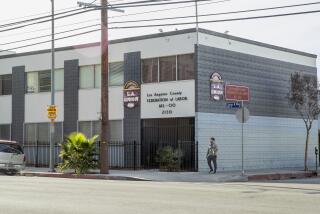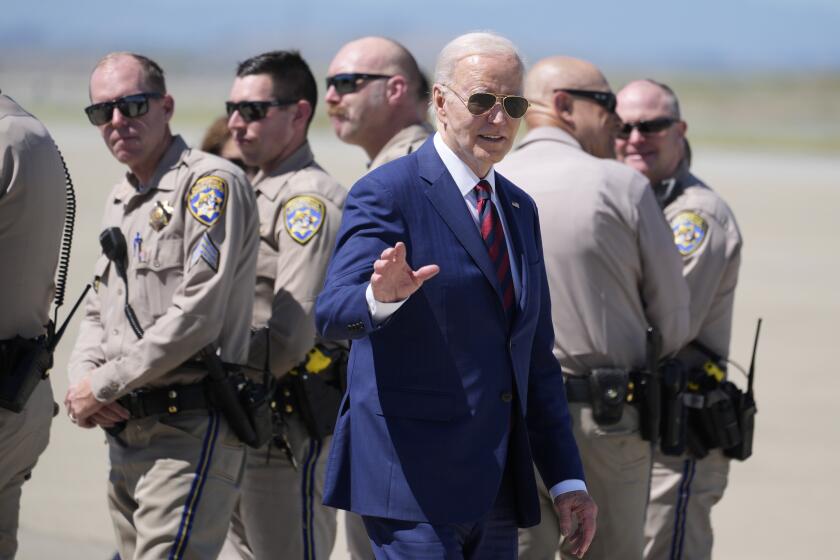Financial Woes Force State Parks to Cut Back : Recreation: Partial closing is planned at 15 historical facilities starting Jan. 1.
Falling tax revenues and gross miscalculations of the income projected from fee increases forced state park officials Friday to order substantial reductions in their operations, including the partial closing of 15 historical parks.
The unprecedented action--to take effect Jan. 1--came as parks department officials grappled with a potential revenue shortfall of $30.2 million, representing 17.1% of the department’s $176.3-million budget.
“It’s a terribly sad day for the finest park system in the world,” said Wayne N. Guthrie III, president of the State Parks Foundation. “In years when the state is having budget deficits . . . it seems the parks are always the first to be cut.” A nonprofit organization, the foundation has contributed more than $89 million to the parks system in the past 20 years.
Although some of the reduction was made necessary by Gov. Pete Wilson’s call for general cutbacks to compensate for dwindling tax collections, by far the greatest portion resulted from the department’s own miscalculation of the revenue that would come from fee increases.
Pressed by the Legislature to become more self-supporting, the department had agreed to increase fees for its parks and services high enough to generate $68 million during the fiscal year ending next June 30. So far, however, officials said the revenue earned from the fees is running $19 million behind their projected levels.
The reaction to the fee increases--for entering, parking and camping--was varied. In many areas the fee hikes were accepted quietly but in others there was open rebellion with local citizens staging protests.
As a result, Parks Director Henry R. Agonia said he was forced to order cutbacks in operations and management, the partial closing of the 15 historical parks and reduction of days and hours of operation at 12 other park sites.
The decision represented the first time in its history that budget shortages have forced the parks department to even partially close facilities.
“We greatly regret these difficult reductions,” said Agonia. “ . . . Every conceivable reduction in operations and management was made before partial park closures were considered.”
Agonia said his decision followed the recommendation of a special task force appointed to study the department’s budget problems, but one member of the group said it had never proposed the partial closing of parks.
Declaring that “closing parks was not the best way to meet a fiscal crisis,” task force member Lynn Sadler said the group “looked at closures and discovered the savings for this fiscal year were minimal.” Agonia acknowledged that they represented a saving of only $300,000.
Sadler, the natural resources director of the Planning and Conservation League, said her group would “vigorously oppose” the closings.
Slated for closure one to two days per week were:
Pio Pico Historic Park, Los Encinos State Historic Park, San Pasqual Battlefield State Historic Park, Antelope Valley Indian Museum, Benicia State Recreation Area, Point Sur State Historic Park, La Purisima Mission State Historic Park, San Juan Bautista State Historic Park, Monterey State Historic Park, Ide Adobe State Historic Park, Old Shasta State Historic Park, Anderson Marsh State Historic Park, Ft. Humboldt State Historic Park and Sonoma State Historic Park.
Parks facing a reduction in hours of operation are: Mt. San Jacinto State Park, Robert Meyer State Beach, Borderfield State Park, Palomar Mountain State Park, Morro Strand State Beach, Manresa State Beach, Wilder Ranch State Park, Woodson Bridge State Recreation Area, Colusa River State Recreation Area, Tomales Bay State Park, Grizzly Creek State Park and Castle Crags State Park.
More to Read
Start your day right
Sign up for Essential California for news, features and recommendations from the L.A. Times and beyond in your inbox six days a week.
You may occasionally receive promotional content from the Los Angeles Times.






